
Do you have a question about the Mighty Mule Silver-HD Dual 25th annivesary series and is the answer not in the manual?
| Brand | Mighty Mule |
|---|---|
| Model | Silver-HD Dual 25th annivesary series |
| Category | Gate Opener |
| Language | English |
Installer and user accept full responsibility for installation, use, and hazards.
Product meets and exceeds UL 325 standards for gate opener safety.
Defines classes I, II, III, and IV for vehicular gate operator applications.
Intended for Class I Residential use, compliant with UL-325 and other safety standards.
Details on gate opener capabilities, weight/length limits, stall force, and auto-close.
Emphasizes reading instructions and familiarizing with installation steps before starting.
Procedure for manually opening and closing the gate by disconnecting the opener.
Verifying gate condition, understanding safety features, and proper gate movement before installation.
Diagram illustrating entrapment zones for pull-to-open gate applications.
Safety measures during installation, including placement, moving parts, and control devices.
Attaching warning signs, gate maintenance, and distributing safety instructions.
Details on inherent (Type A) and external (Type B1/B2) entrapment sensing systems.
Explains the audio alarm that activates upon repeated obstructions.
Mandates warning signs for automatic gate operation and details their placement.
Suggests safety edge sensors or photo beams for improved entrapment prevention.
Details warning labels that should be present and their locations.
Repeats the procedure for manually opening/closing the gate.
Lists all hardware components for mounting the gate openers.
Lists components like the control box, receiver, transmitters, and transformer.
Lists necessary tools and optional items for installation.
Details on the screw drive, motor, and opening arc.
Information on battery power, transformer, and fuses.
Specs on the control board, receiver, and sensors.
Table showing estimated daily cycles based on gate weight and length.
Illustrates a typical pull-to-open installation setup for dual gates.
Instructions for ensuring gates are plumb, level, and swing freely before installation.
Guidance on determining post bracket position and using appropriate hardware for different post types.
Recommended methods for reinforcing thin-walled tube or panel gates.
Steps for aligning and temporarily securing the post bracket and gate bracket.
Detailed steps for marking, drilling, and fastening post and gate brackets.
Illustrations of various gate bracket mounting configurations.
Attaching the master gate opener to the previously installed brackets.
Repeating the mounting process for the second gate opener.
Attaching the horizontal closed position stop plate to the master gate leaf.
Instructions for securely mounting the control box at the required height.
Inserting and connecting the 12V batteries to the control board terminals.
Wiring the master gate opener's power cable to the control board terminals.
Wiring the second gate opener's power cable to the control board terminals.
Selecting an outlet, measuring wire, and preparing for transformer connection.
Details on solar panel options and their effect on gate activity.
Information on the required 16 gauge stranded low voltage wire.
Steps for trenching, routing, and connecting the low voltage wire to the control box.
Explains the function of DIP switches for modes like soft start and push-to-open.
How to adjust the auto close timer using the potentiometer.
Steps to set the desired closed positions for both master and second gates.
Guide to changing the factory default transmitter code using DIP switches.
Procedure to clear previously set closed limit positions.
How to adjust the stall force potentiometer for gate obstruction settings.
Recommendations for optimal placement and mounting of the receiver.
Describes the common terminal and various input types for accessories.
Illustrates wiring for locks, sensors, keypads, and other accessories.
Explains connections for sirens, lights, and other relay output devices.
Steps to determine the correct mounting position for push-to-open gates.
Steps to set the desired open positions for both master and second gates.
Lists accessories for powering the gate opener system, like wires and solar kits.
Accessories for controlling access and operation, such as transmitters and keypads.
Accessories that activate the gate operator automatically, like vehicle sensors.
Security accessories like automatic gate locks and pedestrian gate locks.
Lists extra accessories like photo beams, pin locks, and replacement transformers.
Describes hardware accessories such as push-to-open brackets and column mount receivers.
Options and considerations for installing openers on masonry, brick, or rock columns.
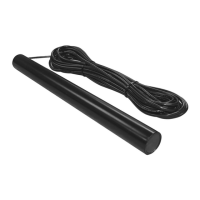

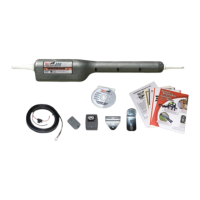



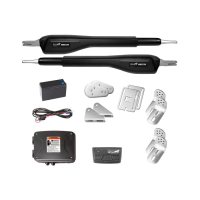
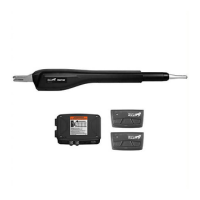
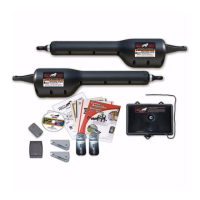



